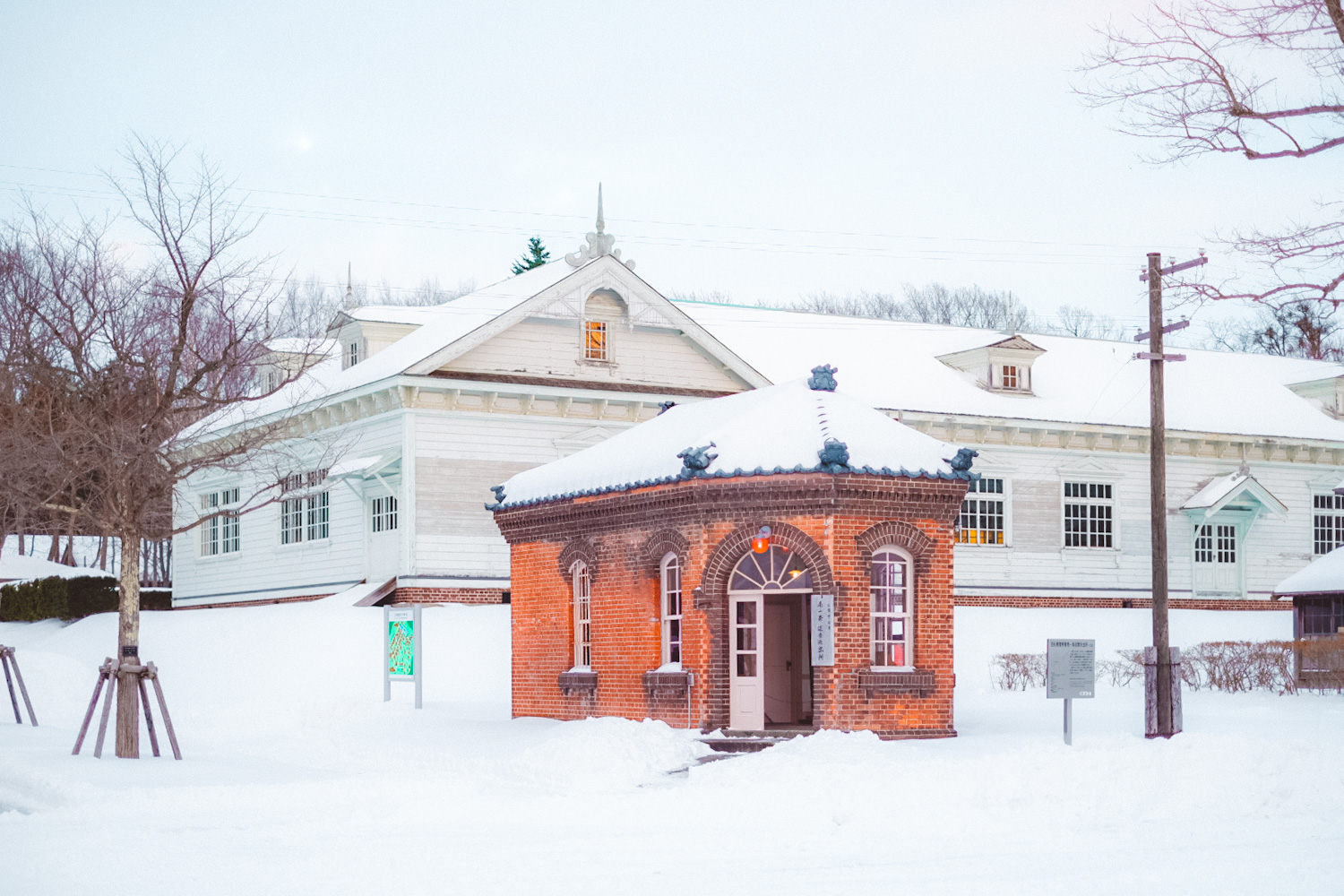Hokkaido, Japan’s northernmost island, has a history that sets it apart from the rest of the country. Unlike mainland Japan, Hokkaido was shaped by the Jomon culture, known for its hunting and fishing traditions, and later by the Ainu culture, which embraced a deep connection with nature. Before the Wajin (mainland Japanese) settled here, the island was known as Ezo. It wasn’t until 1869, during the early years of the Empire of Japan, that Ezo was renamed Hokkaido. To commemorate the 100th anniversary of Hokkaido’s founding, the Historical Village of Hokkaido was established, offering visitors a glimpse into life on the island a century ago.
On a chilly January day, I embarked on a journey to this open-air museum, located just outside Sapporo. The Historical Village of Hokkaido is an ideal destination for a day trip, offering a unique opportunity to step back in time and experience the region’s pioneering era.
Our Winter Adventure
From Sapporo Station, the journey to the Historical Village is straightforward. A 20-minute local train ride to Shinrin Koen Station costs just 260 yen. From there, the most convenient option is to take a short bus ride (5 minutes, 210 yen) to the village entrance. However, my boyfriend and I, lured by the promise of adventure, decided to walk instead.

In hindsight, this was not the wisest decision. While the route offered stunning winter scenery—think snow-covered landscapes, the Hokkaido Centennial Memorial Tower, and the serene Nopporo Forest Park—it was also freezing, slippery, and exhausting. After 30 minutes of trudging through the snow, we finally arrived at the original Sapporo Railway Station Building, the gateway to the Historical Village.
Stepping Into a Winter Wonderland
The Historical Village spans 54 hectares and is divided into four sections: town, farm, fishing, and mountain villages. Each area features historical buildings relocated from across Hokkaido, showcasing the region’s diverse lifestyles and culture during its early years.

As we entered the village, I was immediately struck by its serene beauty. The entire area was blanketed in thick, powdery snow, creating a magical atmosphere. With no crowds in sight, it felt like we had the entire village to ourselves.

During the summer, visitors can explore the village on a horse-drawn trolley, while winter offers the charm of a horse-drawn sledge. Unfortunately, the sledge wasn’t available during our visit, so we explored on foot. While this allowed us to take in the tranquil winter scenery at our own pace, it also meant we didn’t have enough time to see everything.
A Glimpse Into the Past
The town area, which was all we managed to explore, was a delight. The historical buildings were open for exploration, each meticulously furnished with artifacts that brought Hokkaido’s past to life. From old-fashioned shops to traditional homes, every structure told a story of the region’s pioneering spirit.

One of the highlights was the charming row of buildings lining the snow-covered paths. The combination of well-preserved architecture and the pristine winter landscape was breathtaking. It felt like walking through a postcard, and I couldn’t stop taking pictures.
Tips for Your Visit
If you’re planning a trip to the Historical Village of Hokkaido, here are a few tips:
- Take the bus: While the walk from Shinrin Koen Station is scenic, it’s also time-consuming and tiring, especially in winter. Save your energy for exploring the village itself.
- Plan for extra time: The village is vast, and with so many buildings to explore, you’ll want to dedicate at least half a day to your visit.
- Visit in winter: The snow-covered landscape adds a magical touch to the experience, making it a must-see during the colder months.
- Timing is key for snow lovers: If you want to experience the village at its most picturesque, plan your visit between late December and early February. This is when Hokkaido receives the heaviest snowfall, transforming the village into a true winter wonderland. During my visit in the first week of January, I was treated to frequent snowfalls, which made the scenery even more enchanting.
Final Thoughts
My visit to the Historical Village of Hokkaido was nothing short of enchanting. The combination of history, culture, and winter beauty made it an unforgettable experience. If you’re planning a trip to Japan, especially during winter, I highly recommend adding this hidden gem to your itinerary. Just remember: take the bus, not the snowy walk!

How to Get There:
- Route 1: Sapporo Station → Shinrin-Koen Station → No.22 Kaitaku no Mura bus (210 yen)
- Route 2: Sapporo Station → Shin-Sapporo Station → No.22 Kaitaku no Mura bus (210 yen)
Whether you’re a history buff, a nature lover, or simply looking for a unique winter adventure, the Historical Village of Hokkaido is a destination that will leave you in awe.

Access Map
Did this entry help you? Or Did you enjoy my photos? Help support my small blog by giving a little cup of joe. I am always grateful when readers reach out wanting to support 🙂
p.s. This post is independently created. However, when you book or purchase something through the retail links, I may earn an affiliate commission to help keep Ploy’s Little Atlas running. Thank you very much for your support!
p.p.s All images used (unless specified) are owned by the author of the blog and permission is required for a repost. Please, reach out via social media channels to ask beforehand if you’d like to use them.
